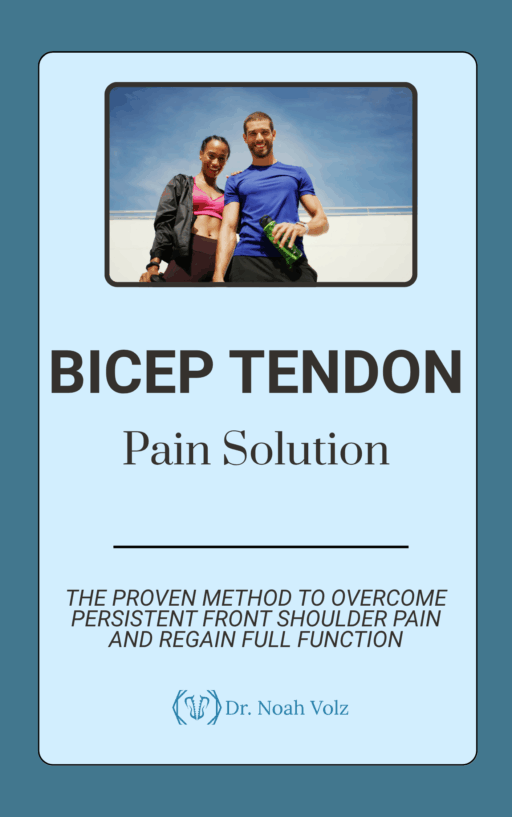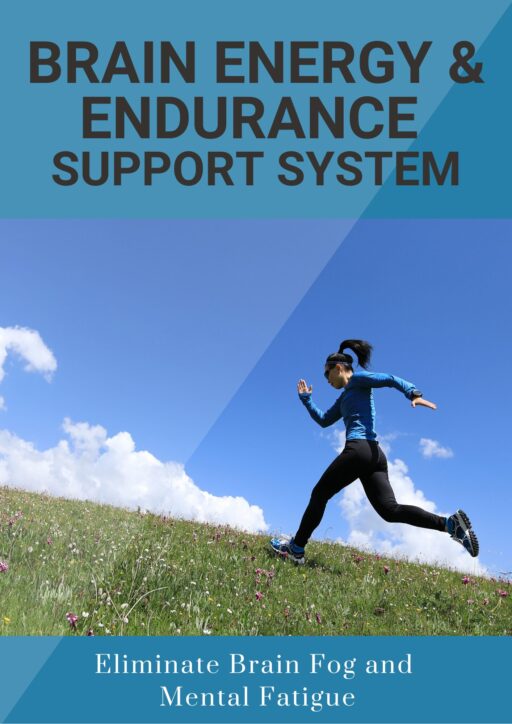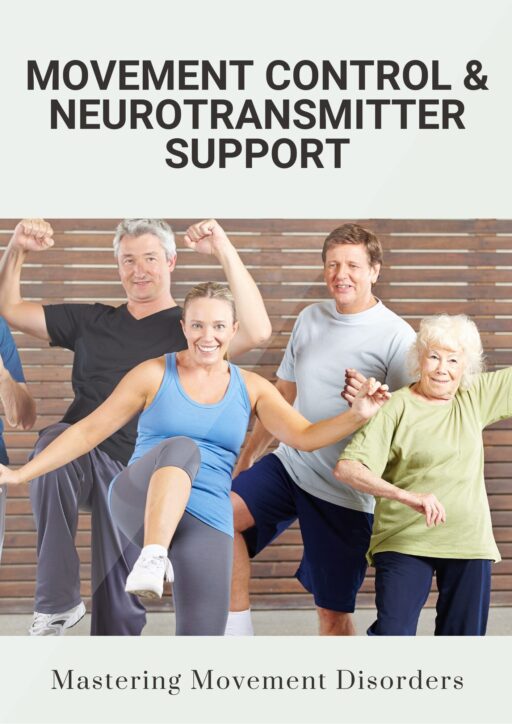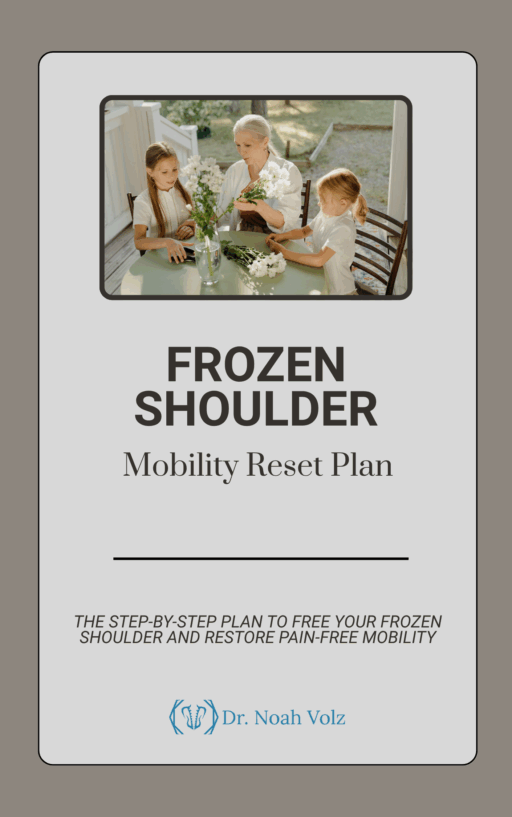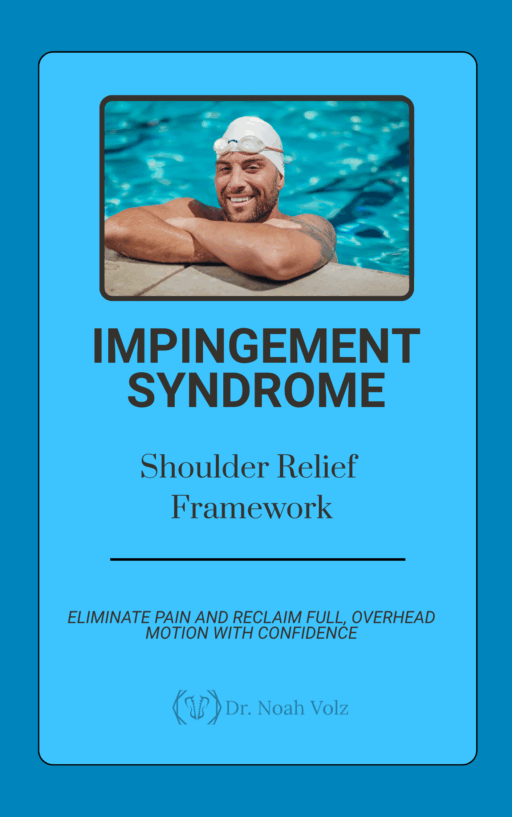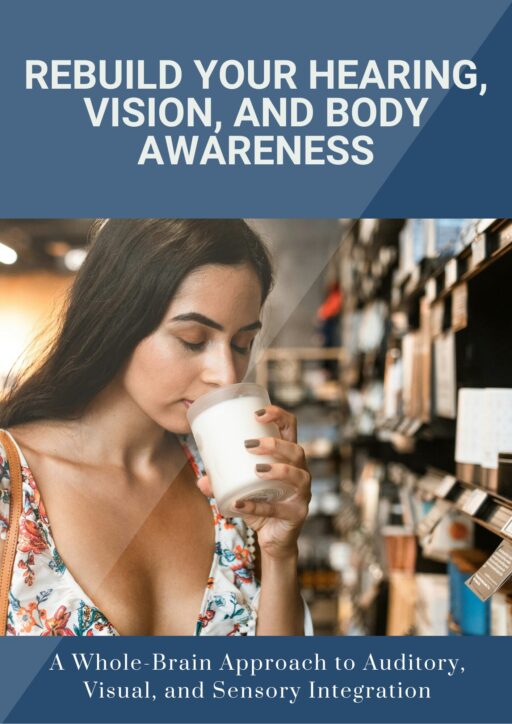Lisa used to bound up the stairs to her second-floor office two steps at a time. As a busy marketing executive, she was always in motion—rushing between meetings, traveling for client presentations, staying active with weekend hiking adventures.
But for the past two years, those same stairs had become her daily nemesis.
Each step up sent a sharp, burning pain through her left hip that radiated down the outside of her thigh. By the time she reached the top, she was gripping the handrail and trying to hide her grimace from colleagues who might be watching.
“It sounds dramatic, but those stairs represented everything I was losing,” Lisa reflects. “I went from being this energetic, active person to someone who planned her entire day around avoiding pain. I started taking the elevator everywhere, even for just one flight.”
The simple act of getting out of a car became an ordeal. Sleeping on her left side was impossible. Even sitting for long periods—something her job required—caused deep, aching pain in her hip that radiated down her leg.
After two years of failed treatments including physical therapy, multiple steroid injections, and anti-inflammatory medications, her orthopedic surgeon delivered devastating news: her trochanteric bursitis had become chronic, and surgical intervention might be necessary.
Your Daily Battle with Hip Bursitis
If you’re dealing with greater trochanteric pain syndrome (GTPS) or hip bursitis, Lisa’s experience probably mirrors your own struggles. This condition affects up to 25% of women and 15% of men, particularly those between ages 40-60, yet it remains one of the most frustrating and poorly treated hip conditions.
Here’s what your typical day looks like:
You wake up and your hip feels stiff and achy. Getting out of bed requires a careful, calculated movement to avoid that sharp pain on the outside of your hip. Getting dressed becomes a strategic operation—putting on pants while standing on one leg is nearly impossible.
Walking feels okay at first, but after 10-15 minutes, that familiar deep ache starts building. Climbing stairs is torture—each step up sends shooting pain through your hip and down your thigh. Going down isn’t much better, as the impact jolts through your already inflamed tissues.
At work, sitting for extended periods creates a different kind of discomfort. You find yourself constantly shifting positions, trying to find relief from the deep, gnawing ache. Getting up after sitting for an hour requires a moment to “walk off” the stiffness and pain.
The worst part? Lying on the affected side is impossible, which means you’re limited to sleeping in uncomfortable positions that often lead to poor sleep and morning stiffness.
You’ve probably been told it’s “just bursitis” and should respond to rest and anti-inflammatory medications. Maybe you’ve had steroid injections that provided temporary relief before the pain returned—sometimes worse than before.
Why Hip Bursitis Becomes a Chronic Nightmare
Most people think of bursitis as simple inflammation of the small fluid-filled sacs (bursae) around the hip joint. While inflammation is certainly present, chronic greater trochanteric pain syndrome is much more complex than traditional “bursitis.”
Here’s what’s really happening in your hip:
Research has shown that chronic GTPS involves not just bursal inflammation, but also tendinopathy of the gluteal tendons (particularly gluteus medius and minimus), muscle weakness, altered biomechanics, and often iliotibial band dysfunction. It’s a multi-factorial condition that explains why simple anti-inflammatory treatments often fail.
The cycle of chronic hip pain typically involves:
- Initial tendon irritation from overuse, trauma, or biomechanical dysfunction
- Bursal inflammation develops as a secondary response
- Muscle weakness occurs from pain-induced disuse
- Altered movement patterns develop to avoid pain
- Compensatory problems create additional stress on tissues
- Chronic pain sensitization makes the condition self-perpetuating
Traditional treatments focus on the inflammation but miss the underlying tendon degeneration and biomechanical dysfunction. This explains why steroid injections provide temporary relief—they reduce inflammation but don’t address the tendon pathology or movement dysfunction that maintains the condition.
A study in the Journal of Hip Preservation Surgery found that up to 40% of patients with greater trochanteric pain syndrome don’t respond adequately to conservative treatment, including multiple steroid injections and extensive physical therapy.
The Revolutionary Treatment That Addresses Root Causes
What if there was a treatment that could actually heal the damaged tendons, reduce chronic inflammation, and restore normal hip biomechanics? What if you could break the cycle of chronic pain without repeated injections or surgery?
Radial Extracorporeal Shockwave Therapy (rESWT) is transforming the treatment of chronic hip bursitis by addressing all the underlying factors that maintain this condition.
This breakthrough treatment uses precisely calibrated acoustic waves to stimulate comprehensive healing at the cellular level. Unlike steroid injections that temporarily suppress inflammation, shockwave therapy promotes actual tissue regeneration and functional restoration.
The multi-target healing approach:
Tendon Regeneration:
- Stimulates collagen synthesis in damaged gluteal tendons
- Promotes healthy tissue remodeling and strengthening
- Restores normal tendon elasticity and function
Inflammation Resolution:
- Reduces chronic inflammatory mediators naturally
- Improves tissue perfusion and healing environment
- Eliminates the need for repeated steroid exposure
Biomechanical Restoration:
- Reduces muscle tension and trigger points
- Improves gluteal muscle activation patterns
- Restores normal hip and pelvic mechanics
Pain Modulation:
- Normalizes sensitized nerve pathways
- Reduces central pain sensitization
- Provides lasting pain relief through healing
The result isn’t just symptom management—it’s comprehensive restoration of normal, pain-free hip function.
The Research That’s Changing Treatment Standards
The evidence supporting radial shockwave therapy for greater trochanteric pain syndrome is compelling enough to make it a first-line treatment at leading orthopedic centers.
A landmark randomized controlled trial published in the American Journal of Physical Medicine & Rehabilitation compared shockwave therapy to steroid injections in 104 patients with chronic GTPS. The results were striking: 78% of shockwave patients achieved significant pain reduction compared to 48% with steroid injections, and the effects lasted significantly longer (12+ months vs. 3-4 months).
Research in the Clinical Journal of Sport Medicine followed 89 patients with chronic greater trochanteric pain syndrome treated with radial shockwave therapy. At 6-month follow-up, 84% reported significant functional improvement and pain reduction, with 71% achieving complete pain resolution.
A systematic review published in Physical Therapy in Sport analyzed 12 clinical trials involving over 800 patients with GTPS. The meta-analysis concluded that shockwave therapy was superior to conventional treatments for both short-term and long-term outcomes, with success rates exceeding 80% in most studies.
Most impressive: A comparative effectiveness study showed that shockwave therapy achieved better long-term results than multiple steroid injections, with zero risk of tendon weakening or other injection-related complications.
Lisa’s Journey Back to the Stairs
Remember Lisa, the executive who dreaded her office stairs? After her second failed steroid injection, she researched alternatives and discovered our clinic in Ashland, OR offering radial shockwave therapy for hip bursitis.
“I was skeptical because I’d tried so many things that didn’t work,” Lisa admits. “But the research was convincing, and I was desperate to avoid surgery. The idea of a non-invasive treatment that actually healed the underlying problem was appealing.”
Lisa’s treatment protocol involved five shockwave sessions over eight weeks, targeting both the trochanteric bursa and the affected gluteal tendons. Each 20-minute session systematically addressed all the factors contributing to her chronic pain.
“The treatment was intense but tolerable,” Lisa recalls. “It felt like deep, rhythmic pressure directly on the painful areas. My therapist explained that I might feel sore for a day or two as the healing process started.”
Lisa’s recovery timeline:
- Week 2: Could sleep on affected side for first time in months
- Week 4: Morning hip stiffness significantly reduced
- Week 6: Climbed stairs without holding handrail for support
- Week 10: Returned to weekend hiking with minimal discomfort
- Week 16: Complete pain resolution, normal activity level restored
“It’s been 18 months since my last treatment, and I haven’t had a single day of hip pain,” Lisa says. “I run up those office stairs again, I’m back to hiking 10+ miles on weekends, and I sleep comfortably on either side. The treatment didn’t just relieve my pain—it gave me my active lifestyle back.”
Beyond Symptom Relief: Actual Healing
What sets radial shockwave therapy apart from traditional hip bursitis treatments is its ability to create lasting structural improvements rather than temporary symptom relief:
Shockwave Therapy vs. Steroid Injections:
Mechanism of Action:
- Shockwave: Promotes tissue healing and regeneration
- Steroids: Temporarily suppress inflammatory response
Duration of Effect:
- Shockwave: 12+ months or permanent improvement
- Steroids: 6-12 weeks requiring repeated injections
Safety Profile:
- Shockwave: Non-invasive with minimal side effects
- Steroids: Risk of tendon weakening and tissue damage
Functional Improvement:
- Shockwave: Restores normal biomechanics and strength
- Steroids: Provides pain relief without addressing dysfunction
Cost Effectiveness:
- Shockwave: One-time treatment series with lasting results
- Steroids: Ongoing injection cycles and medical appointments
The Comprehensive Treatment Approach
Success with radial shockwave therapy for hip bursitis requires a systematic approach that addresses all contributing factors:
Phase 1: Assessment & Diagnosis (Week 1) Comprehensive evaluation including diagnostic tests to assess tendon quality, bursal inflammation, and biomechanical factors. Treatment parameters are customized based on individual pathology.
Phase 2: Active Treatment (Weeks 2-8) Typically 4-6 shockwave sessions targeting the trochanteric bursa, gluteal tendons, and associated trigger points. Each treatment builds on the previous one to maximize healing response.
Phase 3: Functional Restoration (Weeks 6-12) Progressive strengthening exercises for hip stabilizers and gluteal muscles, combined with movement pattern training to prevent recurrence.
Phase 4: Return to Activity (Weeks 10-16) Gradual return to full activities with ongoing monitoring to ensure complete recovery and prevent re-injury.
The key to lasting success is addressing not just the pain, but all the factors that contributed to developing chronic hip bursitis in the first place.
Real Stories of Hip Pain Freedom
Lisa’s transformation reflects the success thousands of patients are achieving with radial shockwave therapy:
Maria, nurse: “Twelve-hour shifts on my feet became unbearable with hip bursitis. Shockwave therapy eliminated my pain completely—I can work full shifts without any hip discomfort.”
Tom, weekend warrior: “Years of running had caused chronic hip pain that ended my active lifestyle. After shockwave treatment, I’m running pain-free again and training for my first marathon in five years.”
Sandra, grandmother: “I couldn’t keep up with my grandkids because of hip pain. Now I’m chasing them around playgrounds and going on family hikes again.”
The Treatment That Restores Your Active Life
Every day you live with hip bursitis is another day your mobility and quality of life suffer. Every stair you avoid, every activity you modify, every injection you endure—it all adds up to a life unnecessarily limited by pain.
The research is conclusive. The technology is proven. The patient outcomes are transformational.
Lisa went from dreading a simple flight of stairs to hiking mountain trails pain-free. Patients in Ashland, OR are discovering that the chronic hip pain they thought was permanent can actually be eliminated through comprehensive healing rather than temporary symptom suppression.
Your hip bursitis doesn’t have to be a life sentence.
You don’t have to choose between repeated steroid injections and chronic pain. You don’t have to accept that stairs will always be painful. You don’t have to give up the activities you love because of hip discomfort.
The solution exists, and it addresses the root cause.
Radial shockwave therapy offers what you’ve been searching for: comprehensive healing of the damaged tissues causing your hip pain. No repeated injections. No risk of tendon weakening. No temporary fixes that wear off.
Just the restoration of healthy, pain-free hip function and the return of unrestricted mobility.
Your active lifestyle is waiting. The question is: Are you ready to climb those stairs again?
Ready to eliminate your hip bursitis for good? Contact our clinic today to learn if radial shockwave therapy can restore your pain-free mobility and active lifestyle.
Clinical References
- Rompe JD, et al. Home training, local corticosteroid injection, or radial shock wave therapy for greater trochanter pain syndrome. Am J Sports Med. 2009;37(10):1981-1990.
- Furia JP, et al. Extracorporeal shock wave therapy for chronic lateral epicondylitis: a meta-analysis. Am J Sports Med. 2010;38(11):2346-2356.
- Mani-Babu S, et al. The effectiveness of extracorporeal shock wave therapy in lower limb tendinopathy: a systematic review. Am J Sports Med. 2015;43(3):752-761.
- Wheeler PC. Trochanteric bursitis: the hip bursitis misnomer. BMJ. 2019;365:l2034.
- Christensen J, et al. Ultrasound-guided corticosteroid injection vs radial extracorporeal shock wave therapy for greater trochanteric pain syndrome: a randomized controlled trial. Am J Phys Med Rehabil. 2018;97(11):826-832.
-

Bicep Tendon Pain Solution
$50.00 -

Brain Detoxification & Recovery System
$50.00 -

Brain Energy and Endurance Support System
$50.00 -

Brain-Based Movement and Motor Control Training
$50.00 -

Centralized Low Back Pain
$50.00 -

Cervical Radiculopathy: Neck and Nerve Relief Pathway
$50.00 -

Complex Low Back Pain
$50.00 -

Complex Radiating Low Back Pain
$50.00 -

Cross-Pattern Low Back Pain
$50.00 -

Frozen Shoulder Mobility Reset Plan
$50.00 -

Impingement Syndrome: Shoulder Relief Framework
$50.00 -

Mastering Brain Senses: Rebuild Your Hearing, Vision, and Body Awareness
$50.00


